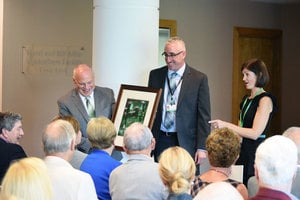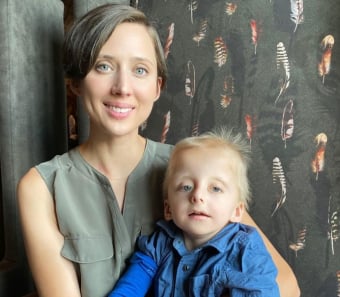
GREENWOOD, SC – The Greenwood Genetic Center (GGC) ushered in some major changes to their Research Division on Tuesday. The Center’s new Director
of Research, Richard Steet, PhD, and GGC Director, Steve Skinner, MD,
formally dedicated the recently completed Hazel and Bill Allin Aquaculture Facility in the JC Self Research Institute on its Greenwood campus.
The facility, named in recognition of a gift to the Greenwood Genetic Center Foundation from Hazel and Bill Allin of Greenville, will ultimately house
10,000 zebrafish that will be used to study genetic disorders, learn about the genes that underlie them, and identify new ways to treat them.
“Many of our studies will address the functional significance of genetic variations in patients and will help accelerate a diagnosis for them,” said Steet
at the dedication event which welcomed GGC staff, board members, donors, and supporters. “Other studies in this model system will focus on defining
disease pathogenesis and using the ability to do drug screening in these animals to identify new therapies.”
Zebrafish are used as a model organism for studying human genetic disorders partly because they share approximately 70% of genes with humans. 85% of disease-causing
genes in humans have a zebrafish counterpart.
“Zebrafish develop externally and the embryos are also transparent, making it easier to watch the development of both normal zebrafish and those with a
genetic mutation,” said Heather Flanagan-Steet, PhD, Director of Functional Studies at
GGC and Director of the Aquaculture Facility. “We can also apply therapies to the zebrafish and quickly determine if the therapy is able to rescue
the disease symptoms.”
“The addition of the aquaculture facility is the beginning of a shift in the paradigm of genetic research at GGC,” shared Skinner. “With the longstanding
research reputation of GGC and Rich and Heather’s commitment to both scholarship and compassionate patient care, we are excited to embark upon this
new era of discovery with the promise of making life-changing breakthroughs for patients impacted by rare diseases as well as more common disorders
like autism.”


